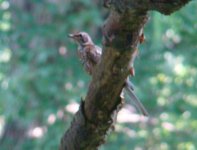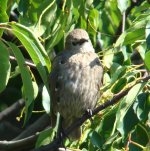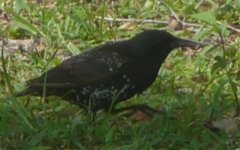NewYorkRookie
Member
OK, I've got a few more... Some will seem almost silly to ask, but I just can't be convinced by some of the traits...
Picture 1: (Unconfirmed2) Looks like a starling, but has more feathers in head area... Took picture in NY in summer 2009
Picture 2: (Unconfirmed3) Another picture from Glen Cove, LI from summer '09, body size of a starling but what...?
I have two more that I'll post to this thread on the next msg.
Picture 1: (Unconfirmed2) Looks like a starling, but has more feathers in head area... Took picture in NY in summer 2009
Picture 2: (Unconfirmed3) Another picture from Glen Cove, LI from summer '09, body size of a starling but what...?
I have two more that I'll post to this thread on the next msg.








